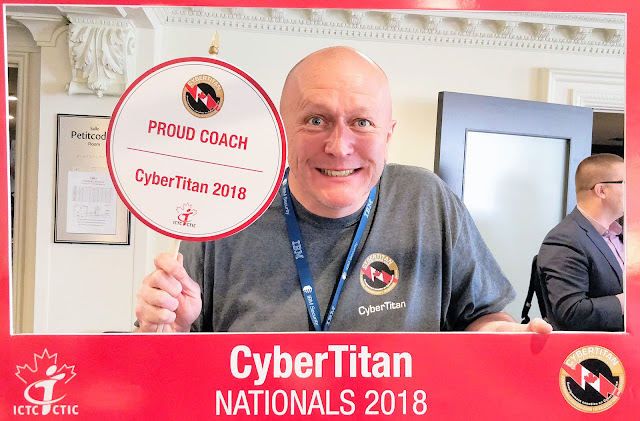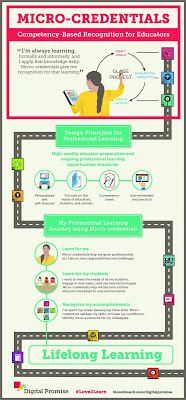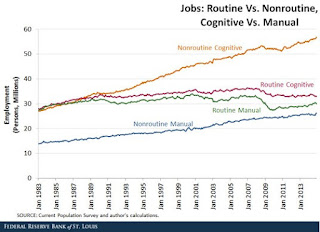This year I applied for a Ministry grant for student driven experiential research. I’ve tried this before without much success, but this time we got OK’d!
We collected interested participants from schools across our board, some of whom we’d built VR computers for, and proceeded to explore the emerging technology of virtual reality from grades 4-12 across four high schools and two elementary schools.
To wrap up the project we had to complete a review of our work – below are my answers to those questions:
Describe how students were involved in designing or co-constructing the learning experience.
CW students were encouraged to volunteer for a school wide VR research group where they got priority access to the VR sets during lunch. 30+ students joined this group but only two finished their projects. Many faded away after midterm when they needed to focus on missed school work rather than volunteer projects. Early self directed research led students into 3d modelling using VR applications, but subsequent groups and individuals looked at curriculum wide VR possibilities.
VR is also integrated into the software engineering courses we run in grades 11 and 12. Two groups elected to develop VR based applications using Unity & Blender. These groups were student directed and managed through the entire development process. HexVR is a reflex action game running on the HTC Vive. Co/Labs focused on creating a virtual classroom that would allow people to meet in virtual space from anywhere to problem solve collaboratively.
https://twitter.com/3204games
https://twitter.com/CoSlashLabs
http://ift.tt/2uvSjpY
Describe how students developed and applied the knowledge and skills associated with education and career/life planning.
Software engineering students follow SWEBOK and
engineering design process planning when developing their software. The purpose of this course is to develop real world planning, collaboration and leadership skills. Many of our grads take the software they developed in class and use it as portfolio work to get into challenging post secondary programs, and in some cases to earn income to pay for their post secondary educations. As a stepping stone into post-secondary and career skills, the leadership skills learned in software engineering are a vital stepping stone.
The engineering design process we follow in software is closely linked to the iterative career/life planning process outlined in the document above – both are self correcting systems.
Describe how students reflected on and applied their learning.
In the voluntary group a rigorous reflection process was not possible and probably led to the lower outcome. In the more structured software engineering class reflection is baked into the iterative engineering design process and students were pressed to constantly assess their progress and change their course depending on how possible their final goals were. This demanding process of reflection on student knowledge and skill, and how effective it was in realizing project goals, was vital to the positive outcomes achieved.
The ministry is particularly interested in projects that promote inclusion and foster equity by focusing on the role of experiential learning to improve outcomes for a diverse group of students. What strategies did you use to ensure that every student participated and was able to derive personal meaning from the experience? *
At CW we offer computer technology courses at open levels in junior grades and at essential to M level/post secondary focused at senior grades. Students of all levels were able to access our VR technology. In addition the VR set was offered school wide and was used by students of all levels in a variety of curriculum learning situations. Our computer teacher (who is writing this) is autistic, as is his son, and his program is especially welcoming to autistic and other neuro-atypical students. Computer classes at CW tend to have very high rates of IEPed students who are able to develop complex technology skills using advanced hardware like our virtual reality sets.
Describe the planned outcomes / learning goals for students.
Students designed projects that would develop virtual reality software. These students were already experienced with 3d modelling and rendering software (Blender & Unity), but VR is such a new thing that there is very little out there to support development. In many cases these student projects were using software that was only weeks old that no one else was using. As an engineering project this was a unique goal: to build something without online support or previous versions to copy from – a completely unique piece of software engineering. Both groups working in this manner acheived working prototypes, and one group has been asked to continue developing their project by a number of interested industry partners. This may end up being the most genuine kind of project imaginable – one that becomes a published piece of software.
Describe the skills, knowledge and habits that students demonstrated related to each of the outcomes / learning goals. Cite data that speaks to the project’s impact on students’ attitudes, achievement and/or behaviour. Refer to Appendix E: Evidence of Impact in the Community-Connected Experiential Learning Project Handbook at http://ift.tt/2uvHN1Z.
Resiliency and self-direction were the main goals of this research work, and the students who stuck with it developed a stick-to-it-ness that will benefit them for the rest of their lives. From our grade 9s who were researching and essential beta testing unfinished software in a brand new piece of hardware to our seniors who were trying to develop software for it, real-world engineering practices were vital to success. Organization and an adherence to the engineering process allowed our successful students to exceed extremely challenging goals while other students benefited from a truly unique set of peer driven exemplars.
Our greatest success came from seniors who developed software both in and out of class, but several juniors also stuck with the voluntary research and produced satisfying and complex results (shared in subsequent answers).
The failure to produce output rate of volunteer non-class related students was exceptionally high while the completion rate of students with in-class support and access was significantly better. While student directed research has merit, it should be noted that teachers have a strong role to play in helping less developed students plan and execute such work.
Reflect on your collection of project artifacts. Select and submit at least one artifact in each category that you think would be the most valuable to other teachers who may have an interest in exploring community-connected experiential learning in their programs. Where applicable, ensure that you have necessary consents/permissions to share. Refer to Appendix D: What Makes A Good Artifact? in the Community-Connected Experiential Learning Project Handbook at http://ift.tt/2tWKgW5.
CW exemplars:
MEDIUM: Oculus Rift 3d modelling software: (grade 9 analysis & review)
documentation: http://ift.tt/2uvv4w8
presentation:
http://ift.tt/2tWPaT2
Software research (grade 9):
http://ift.tt/2uvFJXy
Grade 11 VR software research
http://ift.tt/2tWGr2XiGC_cvbIoLc/edit?usp=sharing
Grade 12 Software development:
http://ift.tt/2uvv53a
HexVR: The pinnacle of CW’s VR research this semester:
http://ift.tt/2tWK4WM
A good examplar needs to show not just student work, but how the student played a part in designing that work. An exemplar of a worksheet designed and given by a teacher is probably aiming for the bottom of Bloom’s taxonomy and wasn’t what we were aiming for in this project.
Involvement of community partner: Describe the artifact you’ve chosen to submit. Explain why you selected this artifact. *
Our community began when our board SHSM lead offered to support us in rolling out VR sets to schools around the board as a pilot program. That roll out created a local community of users. Our grant application grew naturally out of our independent research as we already knew of each other and were keen to work together exploring this technological learning opportunity.
Some early adopters, most significantly TJ Neal at ODSS, had been into VR since before it went public using engineering samples of early VR sets, but he was working in isolation. Our local community, started by SHSM and then supported by this Ministry grant has created fertile ground for new technology research to occur.
TJ’s early work had also put him in touch with Foundry10, a Seattle based educational research group with an interest in VR. Their support early on in providing hardware and, more importantly best practices from other schools all across the continent, allowed us to quickly overcome or avoid obstacles and get our sets running in a sustainable and safe manner.
Community involvement both locally, at the board level, and even internationally online (and in person when Foundry10 came to visit) was key to our success in HexVR as well as our other projects related to this grant.
The artifact chosen would be Foundry10’s VR research which we both participated in and benefited from: http://ift.tt/2li1qbC
Student involvement in the design/planning: Describe the artifact you’ve chosen to submit. Explain why you selected this artifact.
HexVR is an astonishing piece of software – a live action 3d game that already works well after only half a semester of in-class development by our senior software engineering class. Our valedictorian designed and built most of it while guiding and mentoring a number of junior engineers. HTC is interested in seeing if he can complete his development and our board SHSM has supplied him with a VR set for the summer to do that.
To technically understand what it means to design a working VR interface like this you have to understand how complicated it would be to ray cast both hands and head in 3d space in a continuous manner in a rendered virtual space. It’s a complex and brutal piece of engineering.
This project was entirely designed and built by our valedictorian (who wants to go into software engineering). His work not only produced a working prototype, but also helped us clarify how and what to teach in future classes. His understanding of how to implement object based programming will drive future engineering work in our class. As an exceptional student about to pursue a professional interest, this is powerful exemplar of student directed planning, design and effective engineering process and helps define what is possible.

HexVR: http://ift.tt/2tWK4WM
Connection to the education and career/life planning program: Describe the artefact you’ve chosen to submit. Explain why you selected this artefact.
Up until three years ago we did not offer any software engineering course at CW. This course, which runs at cap each year, allows students to experience the engineering process involved in building software using industry rules, goals and expectations.
We already have graduates who have published software and many have gone on to successfully complete in-demand, high-expectation post secondary programs in digital technologies with great success.
Cameron’s work, like the work of other grads, will go on to produce a working software title. The difference is that Cam did it using emerging hardware and software. As an example of industry grade engineering by an Ontario high school student, there is little better.
Application of the experiential learning cycle: Describe the artifact you’ve chosen to submit. Explain why you selected this artifact.
A great example of the experiential learning cycle was grade 9 Kathryn’s research into Oculus Medium.
With less than a year under her belt in high school and with little experience in self directed research and while looking at days old software on weeks old new hardware, Kathryn self organized, planned an approach and executed it, all without any grades hanging on it (she wasn’t even my student at that point, she’d finished grade 9 computer tech in semester one).

A key aspect of experiential learning is self direction. In Shopclass As Soulcraft (a book any tech teacher or maker interested instructor should read), Matt Crawford proves the importance of self direction both in skills mastery and, ultimately, professionalism. Someone who is unable to self direct their work is not a professional. To see this kind of dedication and professional focus in a grade 9 student is exceptional and underlies the importance of offering the self directed planning of projects at the high school level.
What did you learn about the development, delivery and impact of community-connected experiential learning? What worked well? What will you do differently next time? *
Offer access to a large number of interested students, you’ll lose many of them in the process, but a big group means more people still working on it at the finish (we had 3 juniors out of 40 complete their research work).
Tying it to a course so there is more support (as in the senior engineering course) made a bit difference in completion rates (100% vs 8%). Offering more support to juniors might improve that, but I’m a big believer in a sink or swim approach to technology learning, and the students not willing to get organized will expect you to end up doing it for them, which isn’t the point of the grant, nor the point of why I teach technology. Having said that, I think I’ll still offer a bit more in the way of initial organizational support to juniors if we do this again because many of them can’t see the point of doing anything unless there is a mark tied to it (and sometimes not even then). That would be a good habit to break if we’re in the business of producing life long learners.
How can the Ministry of Education continue to support your efforts to provide community-connected experiential learning opportunities that promote student engagement, improve achievement, and foster well-being and life-long learning? *
Emerging technology is a sign of our times. The nature of digitization means everyone currently in education needs to be conversant in it – just like literacy or numeracy. Digital Fluency in Ontario education is at best an afterthought. The MoE should be looking to support digital fluency in both its staff and its students. We make grade 9 Geography and Art mandatory but there is no mandatory digital technology course, yet every student is expected to know how to use it both in their learning and in any future career they might have. Thinking that students magically know technology because they were born into it is ludicrous. Do you know how to replace a clutch in a car because cars were prevalent when you were a child? Or even just change a tire? Basic digital fluency is an expected foundational skill in 2017, but we don’t treat it like one. If the Ministry wants to help at all, start there.
Digital technology is connecting us both locally and virtually in ways unprecedented in history. Teaching all of our students how to do the digital equivalent of learning to drive, change a tire or look after the oil means they keep themselves on the road and get to experience and exploit that connectivity. You want community connected experiential learning opportunities? Digital technology is the grease the makes that wheel turn.
I teach students from grade 9s with little experience or interest in computers to grade 12s who are going to make it their life’s work, and every single one of them across that massive spectrum of skill and experience would benefit from a province wide focus on digital skills; it would make everything work more smoothly in a changing world and prepare our graduates for whatever job they may eventually inhabit.
Experiential learning is amplified with technology (VR is an excellent example of just how
 powerful that can be – try standing in a ruined Auschwitz on a misty morning alone in VR and see if it isn’t). Student engagement is spiked by technology (assuming they are capable of using those tools effectively), achievement is improved as technology skills open the door to opportunities like elearning and other non-geographically limited learning. Student well being is improved with the ability to communicate with like minded people and seek out help when it’s needed, and lifelong learning is encouraged and enabled when you can make effective use of technology and then apply it non-habitually and functionally in your learning. The future’s so bright, but only if we’re ready for it, and we get ready for it by developing our hard skills in a focused, curriculum driven structure. We all become more literate if we’re all more literate.
powerful that can be – try standing in a ruined Auschwitz on a misty morning alone in VR and see if it isn’t). Student engagement is spiked by technology (assuming they are capable of using those tools effectively), achievement is improved as technology skills open the door to opportunities like elearning and other non-geographically limited learning. Student well being is improved with the ability to communicate with like minded people and seek out help when it’s needed, and lifelong learning is encouraged and enabled when you can make effective use of technology and then apply it non-habitually and functionally in your learning. The future’s so bright, but only if we’re ready for it, and we get ready for it by developing our hard skills in a focused, curriculum driven structure. We all become more literate if we’re all more literate.
Research work like we did in this project seems far fetched and theoretical, but it’s what is coming next, and allowing us to explore this emerging technology and see what it can do for experiential learning allows us early adopters to improve our advanced skills while laying the groundwork for wider adoption down the road. This is differentiated instruction that helps us all, and for that I thank you for the chance to do it.
from Blogger http://ift.tt/2uvv7Ik
via IFTTT
 I just got back from the Canadian National cyber-security finals in Fredericton, NB. This was the first national championships in cybersec and it piggy backs on the the US/worldwide cyber-security contest called Cyberpatriot. Canada, and especially Ontario, is late to this party, but there is still time to catch up.
I just got back from the Canadian National cyber-security finals in Fredericton, NB. This was the first national championships in cybersec and it piggy backs on the the US/worldwide cyber-security contest called Cyberpatriot. Canada, and especially Ontario, is late to this party, but there is still time to catch up.
 You don’t need to be techie or have previous experience to get into the competition. It’s a small entry price ($200 last year) and you get 10x back in access to Cisco, Microsoft and other content. You also get a really nice set of team shirts, pins and challenge coins (Americans know how to do swag). Your students also get to brag about working off US government servers, because that’s where the contest takes place virtually.Cyber-sec is a field that is in high demand, it’s exciting, ever changing and the requirements and pathways to get to it are rapidly evolving and improving. The Canadian Forces are launching a cyber-command that will offer high school graduates equivalent college level training in cyber-ops.
You don’t need to be techie or have previous experience to get into the competition. It’s a small entry price ($200 last year) and you get 10x back in access to Cisco, Microsoft and other content. You also get a really nice set of team shirts, pins and challenge coins (Americans know how to do swag). Your students also get to brag about working off US government servers, because that’s where the contest takes place virtually.Cyber-sec is a field that is in high demand, it’s exciting, ever changing and the requirements and pathways to get to it are rapidly evolving and improving. The Canadian Forces are launching a cyber-command that will offer high school graduates equivalent college level training in cyber-ops.

























